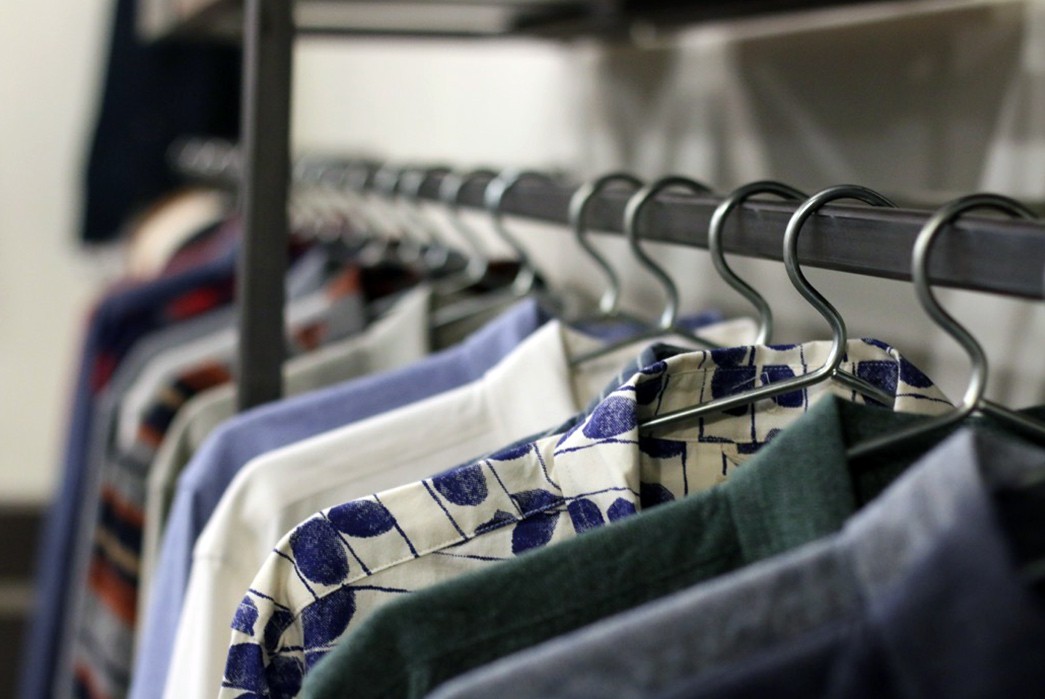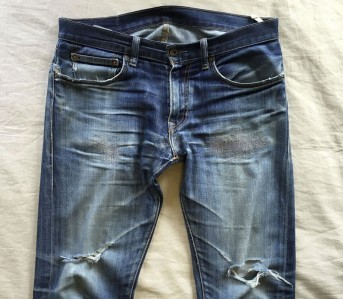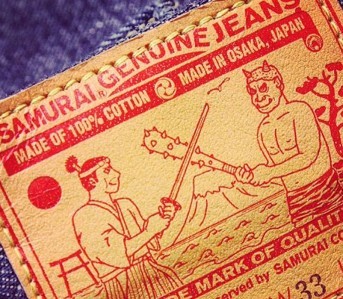White Oak Economy is a monthly column by denim journalist veteran, Amy Leverton where she examines the interplay between the worlds of high end artisanal denim and the mall brands behind them.
Last month I put together an analysis of the trade show: what it used to be, what is it today and where I and other industry leaders see it morphing in the future. But during those conversations, the subject of retail came up time and again. Because let’s face it, the retail landscape has totally changed over the last decade and, with online connectivity continuing to push forward, it’s only a matter of time before it has changed forever.
Already I’ve seen a massive shift since being a kid growing up in the 90s. Back then I looked to magazines to find out where to buy clothes when they hit the stores, I could also be influenced by what I saw my peers wearing. Mostly of course, I would simply walk into a store and chose from what happened to be in there. In those days the only channel of communication between brand and consumer was through the magazine and the store.
Because of blogs, Instagram, Pinterest, Tumblr and various other forms of social media, today we are not only spoilt for choice, we are almost overwhelmed by it. What consumers can access today, compared to what they could access 5 years ago is like night and day.
Almost gone are the Superfuture forum posts where people would arrange trips to Japan to buy up tons of Japanese jeans for themselves and their various forum buddies, because the product was impossible to obtain outside of the country. Japan used to be a closed market and brands even shunned outside interest from global stockists. The in-store appearance of Japanese denim brands outside Asia really is a pretty recent phenomenon, spearheaded by hard and consistent work from a handful of specialist retailers such as AB Fits, Self Edge, Son of a Stag, etc.
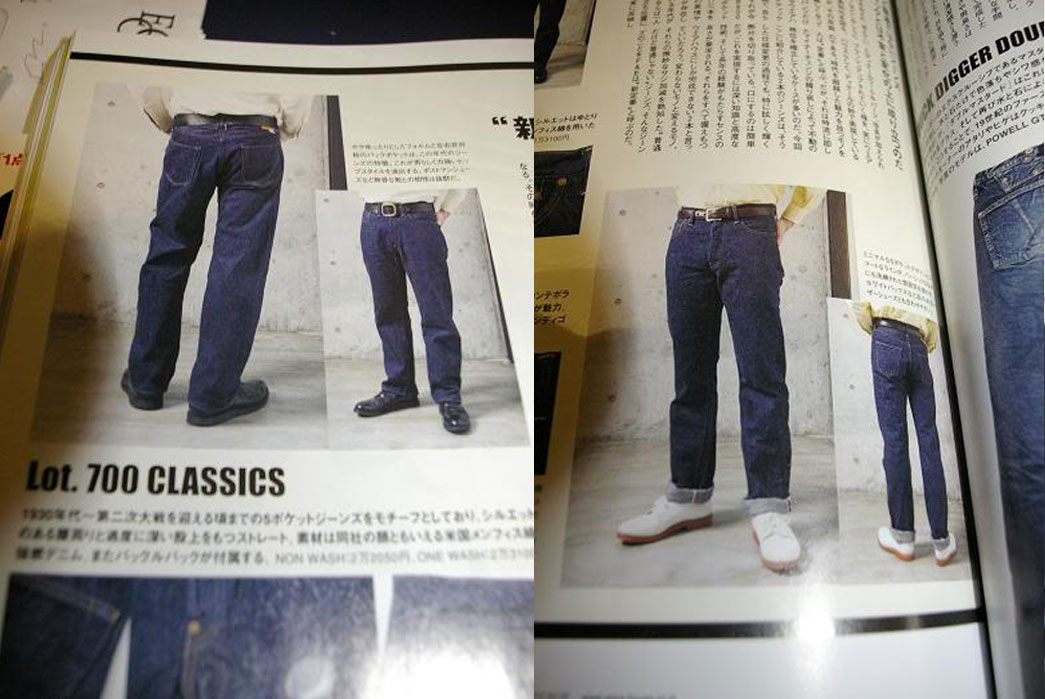
Superfuture users posting screencaps of Free & Easy Magazine to learn about Warehouse jeans in 2009.
So far, so positive: consumers and enthusiasts can buy their most beloved jeans, can follow their denim idol’s lives, can communicate with fellow denimheads around the world, can connect with, purchase and interact with pretty much anything and anyone they like. So why then is the retail industry in such turmoil? Well because of all this online activity, basically.
As well as being vast, the online connection to product and community is also immediate. Recently, designer Raf Simons told the Telegraph:
“These days it’s a different way of consuming. It’s now looking and then swiping to the next thing – looking, next; looking, next; looking, next; next, next, next, next – there’s less dialogue and engagement with it (product) in general.”
When I was pouring over magazines in the 90s, images would be torn out and stuck on walls or in scrap-books, lists were written and strategic plans were made to obtain these elusive and much adored items. Now I double tap, scroll, screen grab, pin… Is this the same level of engagement as the 90s, just a modern evolution? Or is this digital interaction more throwaway? And is it effecting what we buy and what we don’t?
I do have a theory that our online avatars (our Pinterest boards, Instagram feeds, Snapchat videos and Facebook accounts) have become a channel for us to express our taste without actually buying the product and might well be slowing down purchases or at least making them more considered and less spontaneous. Sure, we’d love to buy that $300 Iron Heart jean, but if we can’t stretch to it, hitting up the Self Edge store, buying a magazine and taking a Self-ie (gettit?!) re-gramming something from Iron Heart’s feed or simply interacting with other like-minded Iron Heart fans online is the next best thing. There are theories out there that the euphoria felt when getting likes on your Instagram post is equal to the endorphins released when in love. If this is the case, of course it can be comparable to the euphoria felt when making a purchase.
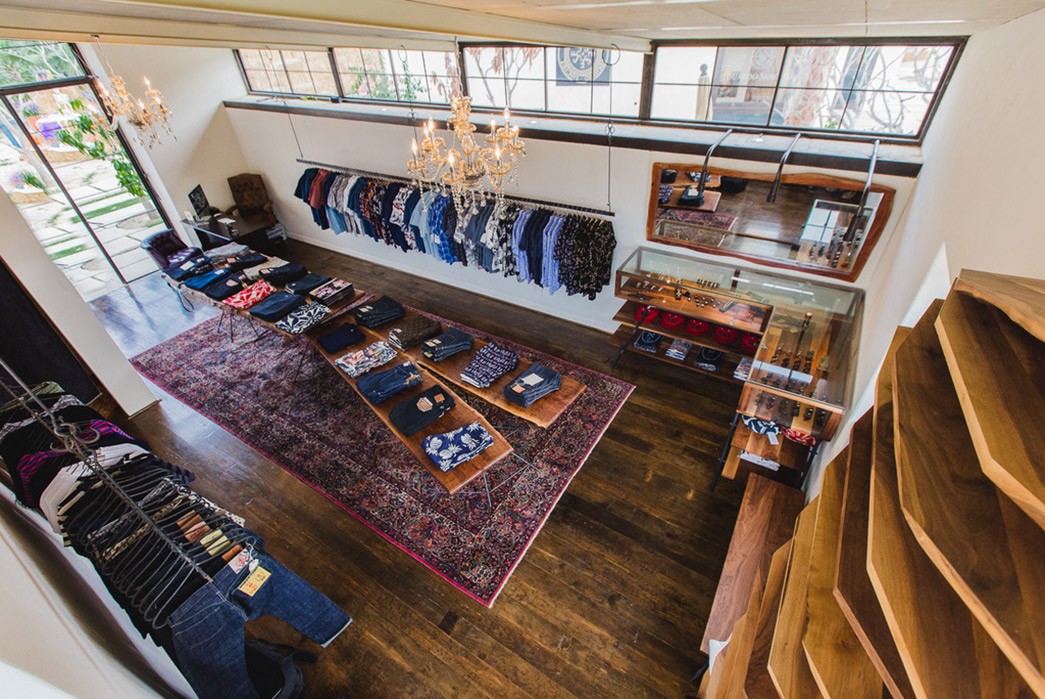
Inside Self Edge’s latest store in Mexico.
However, on the flip side of this argument is the fact that now we’re able to share so much with our coveted brands, this can actually bring us closer to their lifestyle and encourage sales. Being online doesn’t just enable us to express ourselves and our tastes but it also teaches us more about the products and why they’re worth the extra pocket money.
We are pretty educated consumers now: in touch with what a brand stands for, where they source, how they make, who designs it and sometimes what they ate for breakfast! This connectivity to product shouldn’t be overlooked as it holds the secret to making brick and mortar retail relevant: engagement. I spoke to Kiya from Self Edge for way too long about all this. He opened his first Self Edge store 10 years ago in 2006 and he’s seen some huge changes take place around him. However, with regards to Self Edge, he has remained steadfast in his approach to retail.
“We haven’t really changed much in the way we run our stores, the way we consider retail and the way we treat sales. We still try to present and explain the story behind a product in the same way, and I think one of the reasons we’ve stayed fairly stable as a company is because we haven’t changed much. When people ask me ‘What do you see as the main trends coming up in denim?’ I sound like an moron because I literally have no idea.
“I think it’s pretty obvious that other retailers are seeing that the only way to succeed is to have difficult-to-find brands and a lot of them, so that the synergy between the brands is not as important any more. I’m not saying that every single thing in Self Edge makes sense next to the other products, but in my mind it makes sense.”
I think it’s this tightly edited selection, strong commitment to a limited number of brands and a very recognizable identity that has helped maintain the success of his stores. To me, a great store or brand comes down to having a strong identity. If you close your eyes, you can clearly envisage what Self Edge is all about. I don’t just mean imagine what a Self Edge store looks like, but what it represents. It has a very strong DNA and that’s one of the keys to its success.
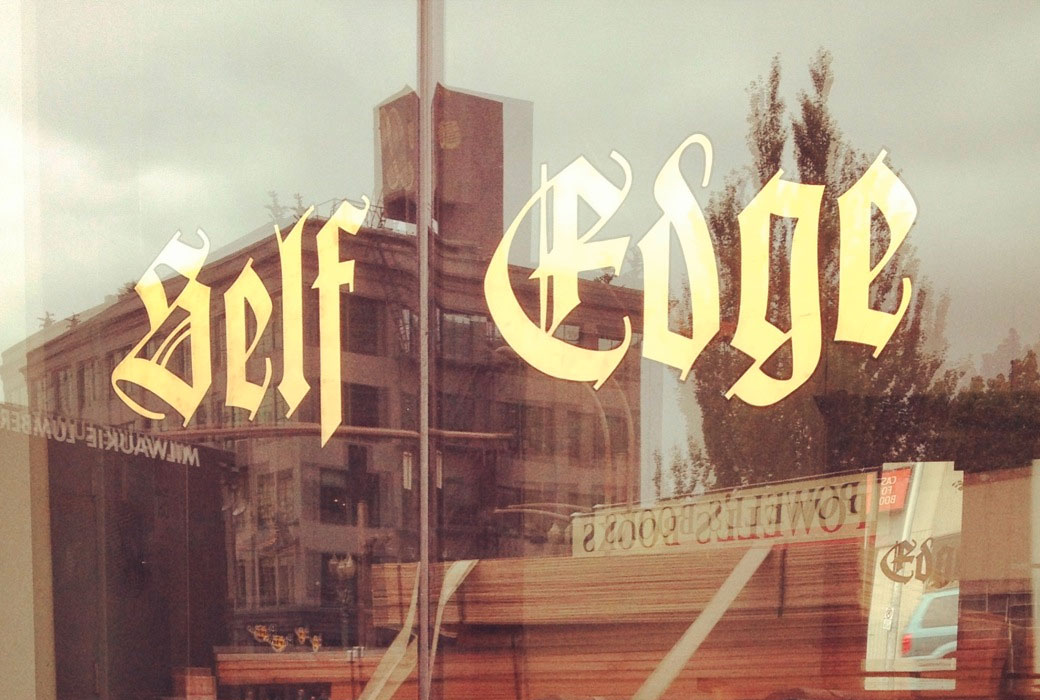
But hey, there are a lot of retail spaces out there that do well with a very different approach. Kiya and I talked about the rise of Instagram and how that has affected store buying techniques in recent years,
“Instagram has a huge part to play in everything we’re talking about. If you follow a ton of people on Instagram, when you step into a store, you’ve seen it all. Buyers are seeing people getting hyped on a certain thing and as a buyer your performance is rated on your sell-through. They’re thinking ‘If I could buy 20 grand of this and sell it all in one season and not put any of it on sale then I’ll get brownie points with my boss.’ And then you have this snowball effect. It’s the same as when you go to a zoo, you don’t have to go Africa to see one animal and the Middle East to see another, you get to go to one place and see it all. It goes along with the American attitude that more is more: bigger and better and faster.”
But is more always necessarily more? These days I’ve noticed that both brands and stores are trying to be everything to everyone, they want every piece of the pie rather than their segment and it’s this greediness that can actually damage the image of a store or a label.
“Stores these days are trying to deliver to you all the cool stuff that you see online, to create a visual Instagram. Those stores are awesome for someone visiting from somewhere that have none of those brands but to me it’s a mess of different visions and different styles.”
Alongside this new need for variety and freshness, the other thing we’re getting from the web is our education. Information on brands is both abundant and at our fingertips. Peer to peer interaction has never been bigger and direct interaction with brands is on the increase. With all this information in the palm of our hands, do we really need a store to teach us anything? Kiya sees it as a double-edged sword:
“What if you’re 21 years old, and before you’ve even walked into my stores you’d spent three months on Reddit. You would think you knew everything about it, you would be fully convinced you knew more than the sales associates in my store.”
Indeed, customers these days not only believe they know more than the sales associates, but they potentially might know as much as other industry professionals such as buyers, press and merchandisers. Of course the first-hand knowledge of working in the field and the years of experience–but the facts and figures, the details of a brand’s history, the comparisons of one jean over another, this is all readily available. Customers these days are not looking to either a brand or a store to tell them whats cool and what to wear. They already know.
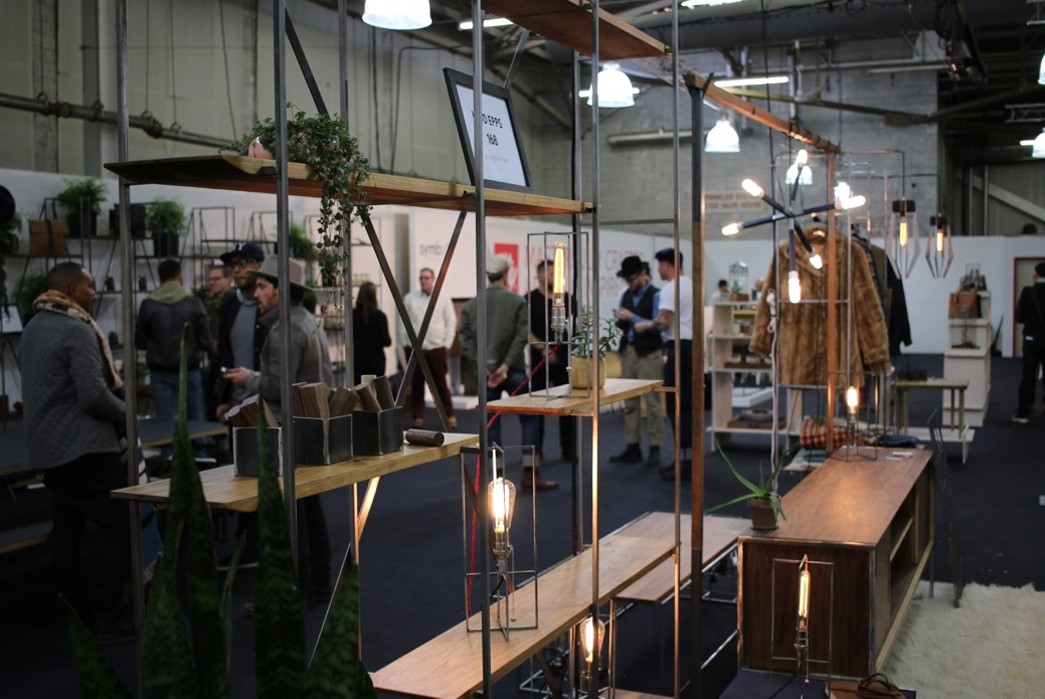
Many consumers are staying seasons ahead of current retail offerings through coverage of industry only tradeshows like Liberty Fairs above on blogs and social media.
With so much research and decision making going online before customers hit the stores, the power is certainly shifting away from the retail experience. A recent Business of Fashion article describes the rise of e-commerce sites, online education, and direct interaction with brands themselves as shifting the power: “As one American designer with more than $100 million in annual revenue told BoF, ‘Ten years ago, you needed a major department store to be successful. Now, you need Instagram.’”
That’s right to an extent, but I firmly believe that customers still like and need to touch real product before making a clothing purchase. Last month I talked about the trade show and lately, a few shows have popped up that are either open to non-industry attendees or tailored directly to them: Lightning Magazine’s Inazuma Show was one of the earliest created with exactly that in mind: to introduce the brands and the magazine editors to the readers and consumers.
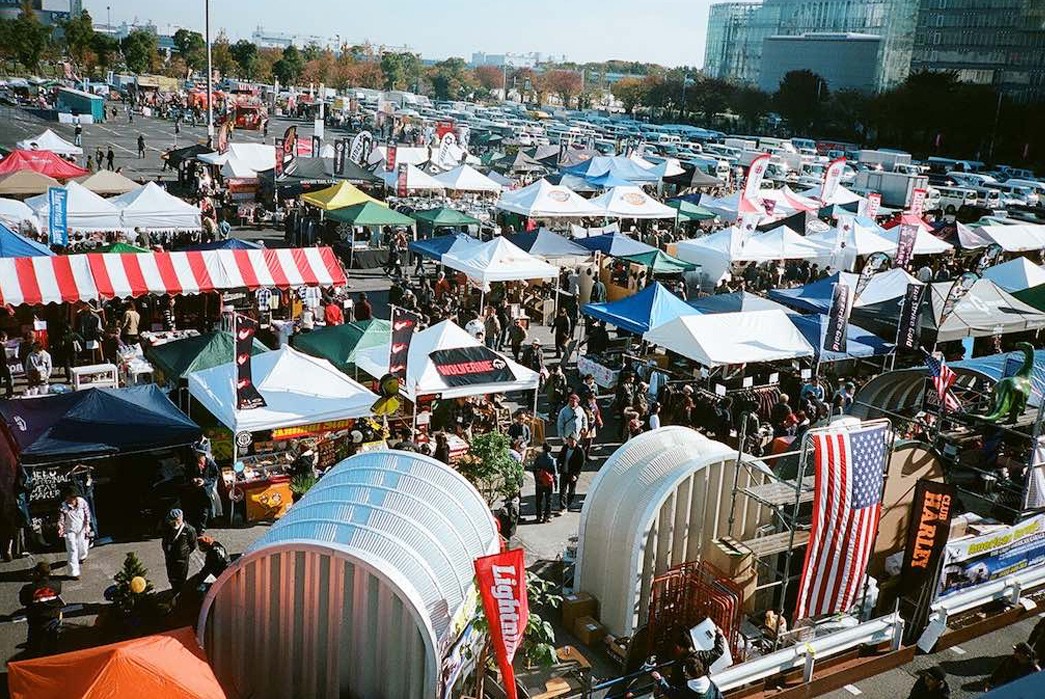
Lightning Magazine’s Inazuma Festival in Tokyo.
In the US, shows such as Pop Up Flea (PUF) and Northern Grade have also set their sites on that market. These kinds of events encourage direct brand interaction, a sense of community as well as direct contact with real product. They provide an experience, which we’re told day in and day out is becoming far more important these days than a simple purchase. And as far as customer service is concerned, you can’t ask for anything better than being sold a jean from the person who made it, can you?
Jamie Apostolou, who teamed up with Michael Williams and Randy Goldberg to manage PUF back in 2013 talked to me about what he thinks is so special about their consumer-facing events, for both brand and consumer:
“With PUF, companies have not only the ability to take three days to create the best expression and experience for their brand, but they’re guaranteed that it will be seen by their target customer. For small brands who might not be able to afford a storefront or location in a department store next to some bigger brands, this is a great opportunity. It’s also what makes PUF interesting for the shoppers, who get a glimpse at their favorite brands while also having the opportunity to find new exciting brands they otherwise wouldn’t have found.”
Interestingly, another show that taps this same concept, Northern Grade, just opened their first actual store late last year as an accompaniment to their consumer fairs. I was in New York last week and happened upon the new Brick and Mortar outpost in South Street Seaport.
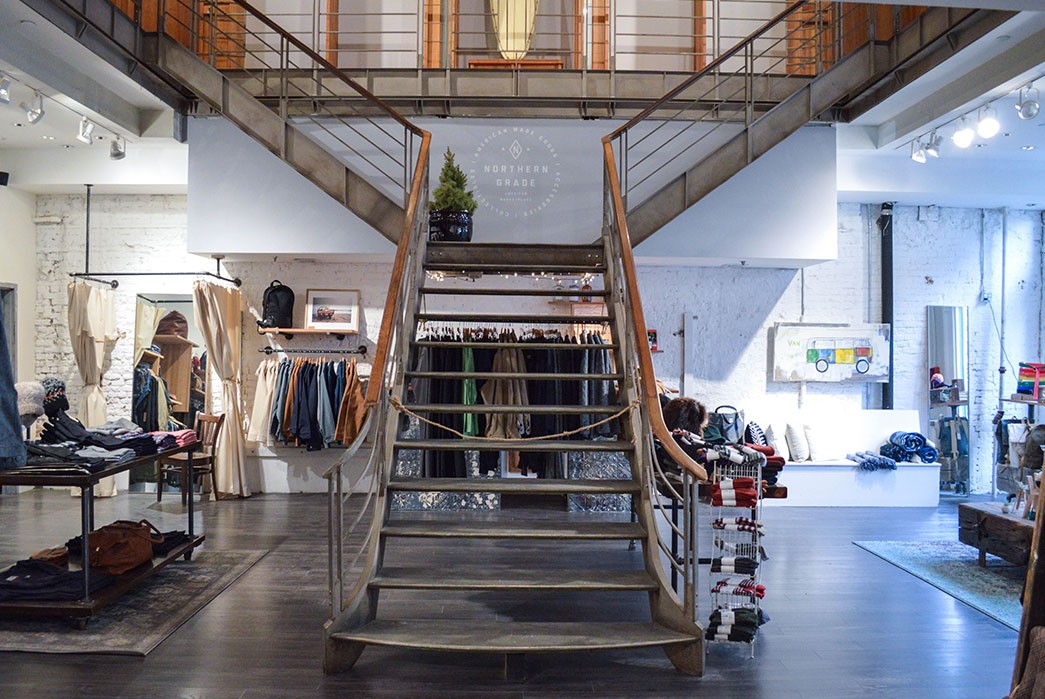
Northern Grade’s flagship location. Image via Racked.
There I met and chatted to Kali Griggs, who’s the Northern Grade store director. As someone who’s working in retail since college (over half her life) she has a few opinions:
“Researchers call the “new” consumer Buyer 2.0. The shopper has become more connected, impatient, and impulsive. 72% of the buying decision happens prior to engagement with a sales person or retail interaction. Buyer 2.0 is influenced by social media, online reviews, peer reviews, and access to product information. This changes the selling landscape. As a retailer, we need to be creative and adapt to the changing behaviors of our informed buyers.”
And how does she act as a consumer now as apposed to ten years ago:
“I work in the reverse to a lot of online buyers; I use online shopping as a domain to educate myself on product before making a special trip to the store to buy that item. Not to mention, I love the interaction I get with sales associates as a customer myself.”
But what intrigued me the most about their new venture is why they’ve taken the concept of a traveling roadshow and made a static outpost. It shows me that the natural growth and evolution of their retail events has still fallen back into the more traditional idea of retail. How can they emulate the excitement of their weekend events in a store and why choose a store in the first place? Kali explains,
“Our pop-ups continue to drive traffic to our Flagship which speaks highly to the experience we’ve created at our weekend marketplaces. When it comes to our retail space, we’re still growing our customer base and awareness in Manhattan. With brands that are growing, they rely on us to help bring the crowds to in-store events.”
Co-founder Mark McMillan chips in: “While we might not have known it when we started doing traveling marketplaces, we actually always have been a retailer, just a unique and different type. Opening a store is a continuation of that growth and shift into omni-channel retailing for Northern Grade.”
And so if stores are trying to emulate Instagram IRL and consumers are all over the internet turning themselves into denim experts, let’s talk about online retail for a minute. We’ve all seen those pesky teases in the corner of our Facebook pages, right? I remember the first time that happened and I was like, “Shit! I just mentioned that brand in an email to my friend and now there it is on my screen, it’s like the internet is inside my brain!” I was properly freaked about it. Now it’s just normal.
In another Business of Fashion article I read “Back in 2000, for every dollar spent at physical stores, just 30 cents were spent online and at mail-order houses. Now, the online category makes up nearly 70 cents for every dollar spent at general merchandise stores” Funnily enough, Nick and David here conducted some research about you guys in a recent survey and 65% of you said you had bought a product you learned about from Heddels and 85% do at least half of their clothes shopping online.
Buying online is just too convenient if you’re buying a water bottle or yoga matt (sorry, I live in LA now), but jeans? I won’t buy a pair of jeans online without trying them on and I don’t know many people who would. The problem is, most people will try on in store and then proceed to buy online, because oftentimes it’s cheaper. Since the 2008 credit crunch, mainstream American retailers have got into this crazy cycle of discounting and sales every 5 minutes: the fall sales start in summer, the January sales start before Christmas, there’s Black Friday and now there’s a permanent sale rack in pretty much every high street store. As that trend has moved online [check out our Sale Finder! -Ed], we’ve got used to crazy competitive prices and the days of store loyalty are numbered.
The other thing about e-commerce is it’s so trackable. In the early naughties you could have been the most extravagant Juicy Couture spender and spend tons of money on the brand through various retailers. But now, if you do it all online, that behavior is trackable and thus open to manipulation. Kali is not a fan: “Online e-commerce websites have created prompts and have algorithms to align ads and pop-ups with clicks and websites you’ve visited. It’s overstimulating, I actually find it frustrating.”
But fledgeling consumers don’t know any different and therefore are much more accepting of these selling techniques. Kiya has experienced the sharp end of this at his store multiple times:
“I am generally hated on Reddit, absolutely hated. A year ago there was a conversation about a guy that came into one of our stores and tried on a unsanforized denim jacket for size. He told the whole story online: how he went in, how my sales associate explained how it’s gonna shrink, and helped him to get his exact size and style number and then he went home and got it on Rakuten for 40% off. He was so excited! There were 50 comments underneath it asking about the fit of the denim, how the denim looked in person, everything, and I’m looking at it thinking ‘Am I in a dream?’ (laughs)
“I commented, I had to comment, (still laughing) I wouldn’t be able to sleep at night! All I think I said was ‘Glad you came in and checked out the shop, thanks for using our store as a dressing room’ It was like world war three! Hundreds of guys were like, ‘You have a bad attitude, man. I’m never shopping in Self Edge again.’ But I knew that was going to happen because this is the mentality, it’s like ‘us versus them’. Us is the consumer and them is every store who’s trying to sell you a Tanner wallet for $70, which is a reasonable thing. In their minds that’s how it is. I feel like anyone with half sense would be like, ‘Hey man that’s not cool, you went in that store and went through everything you gotta do to buy that jacket, except pay for it’. How did it get to 50 comments and nobody called him out? I guess this is the sign that shit, maybe I shouldn’t open new stores.” (laughing a lot)
So what is the future of retail then? I’ve explored the many facets to this very complicated and changing world, written almost 4000 words and drawn very few conclusions about where it’s going. I think this is because we honestly don’t know yet. When an idea appears that offers a solution or a new answer to the issues of modern life, it always bowls us over, it always comes from somewhere you didn’t expect and surprises us.
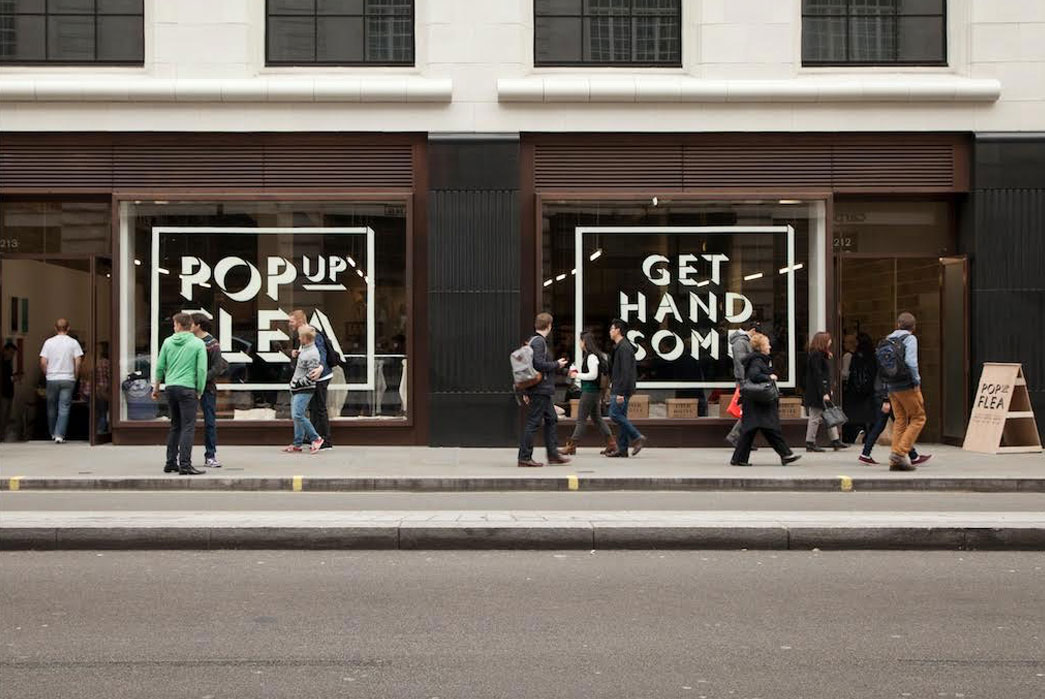
Pep Zorzano, who I interviewed for my last piece, thinks there might be something to be said for stores acting like showrooms for shoppers rather than actually selling; generating their money from either the brands themselves or from creating experiences such as coffee shops. But you’d have to sell a whole lot of coffee to make it worthwhile!
Jamie of PUF agrees that the future of retail is looking harder and harder to make work:
“The retail landscape is tricky and only getting tougher. This is especially true for a crowded e-commerce marketplace and large cities, where overheads are becoming restrictive. More and more, the retail landscape is becoming repetitive and big-box stores are popping up everywhere. Companies are relying more on data to drive the decision making part of the retail experience and leaning less towards taking creative risks that can really pay off if done well.”
Kiya doesn’t have the answer either:
“It’s a strange time in fashion in general, there is a better system but I don’t know what it is yet. There’s no solution to this right now. I am a huge fan of brick and mortar stores, huge. You get to feel and smell and touch. Unfortunately that’s a bit like me saying I still buy CDs. I’m like an old person now! I think it’s a truck going directly towards online only.”
What’s happening in retail is also being mirrored in the fashion houses and maybe the huge brands and giant fashion malls are becoming obsolete. It would be pretty refreshing to think that in 20 years time, larger corporations and big money was replaced by multiple boutique stores or sales going direct to brands. If you are small, you are much more stable and with so much choice out there, how can any company really dominate? (I know I know, but I can’t even mention Amazon at this point, it breaks my heart!) Kiya has a very simple, humble plan for his future:
“I’m only concerned for a few things; I want to pay my vendors on time and I want to be able to stay open for as long as I’m around. That’s it. I want a successful, stable business. I firmly believe that if we’d taken on a ton of money and investment we would have failed. What we do doesn’t translate to quick growth.”
So if you’re a store out there, wondering what the future holds, what should you do to stay afloat, to stay relevant and continue to appeal? I also asked Kali what she thought:
“I think a store’s success is based on two things: product and personality. There’s the business side, with the store’s ability to target its consumer and also cater to the masses. But there’s also the personality side, and building customer relationships. I think in getting to know my customer at the store level, I’ll be able to gauge better what they need. It’s a bit psychological in that sometimes the consumer needs to be reminded of what they need as opposed to what they want. Not to mention, you never know who you’ll meet or the mutual connections you may have.”
